In Tsarina I visited last year. I was there on an off-the-record day, namely 10.10.2010. While traveling there, on the radio listened to so many different things that it was right to return and not leave the house until evening. But the day, contrary to various predictors, went quite well. Let's go for a walk along the Tsaritsyno museum-reserve.
Greenhouse ponds, Greenhouse bridge.
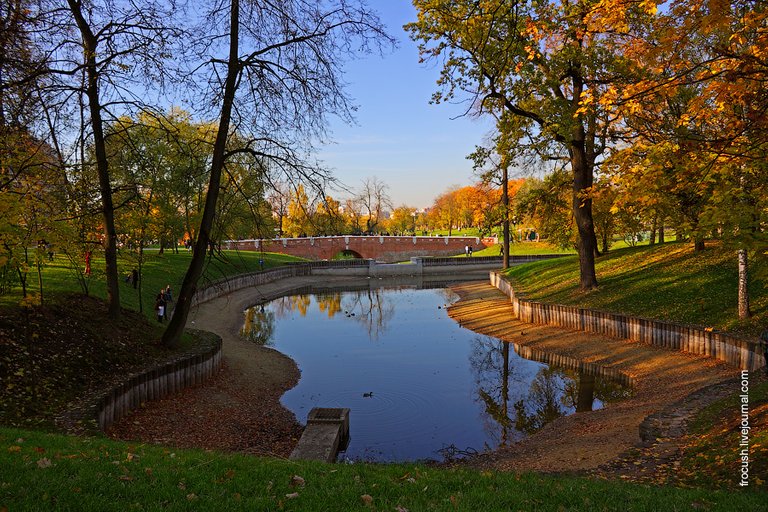
Restored greenhouses of the Tsaritsin Palace.
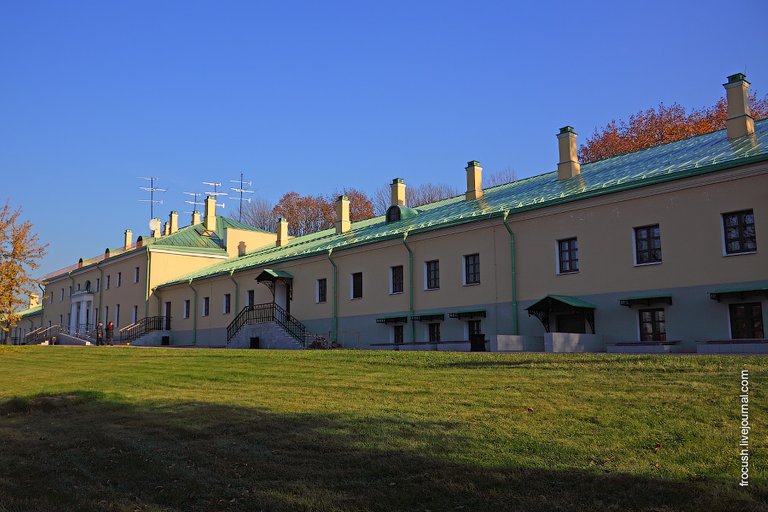
The State Museum-Reserve "Tsaritsyno".
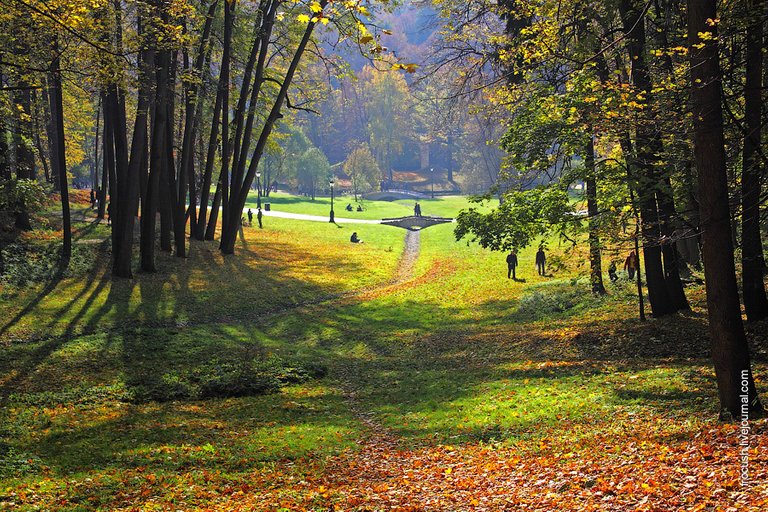
Pavilion - the grotto of Diana with a statue.
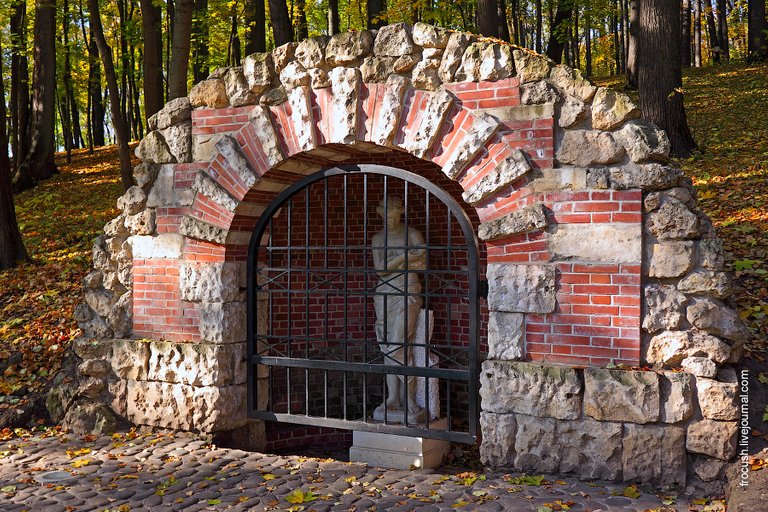
With the help of a blower, which hangs on the back of the landscape designer, and a hose in the park "Tsaritsyno" formed heaps of fallen leaves. In the yards at this time worked rake.
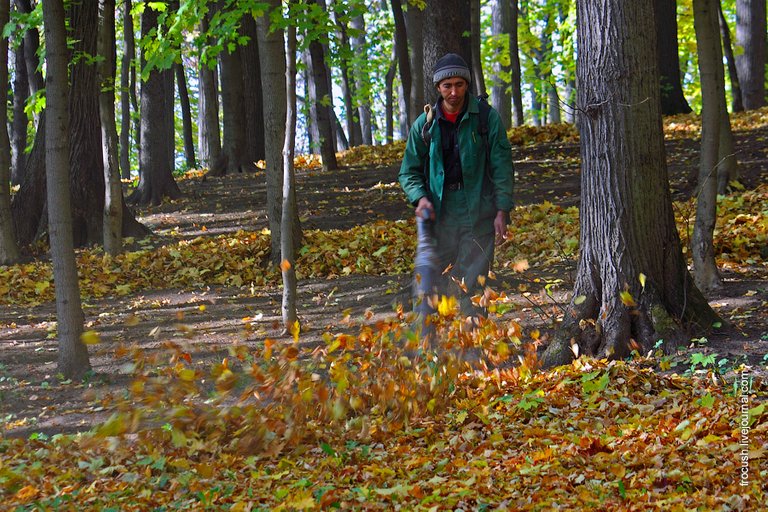
The tower-ruin. It was built from "wild stone" in 1804-1805. Under the project of the outstanding Russian architect IV Egotov. Reproduces in miniature the corner tower of the castle and part of the dilapidated fortress wall. Originally was crowned with a light belvedere and had a viewing platform, to which along the crest of the wall led steep steps.
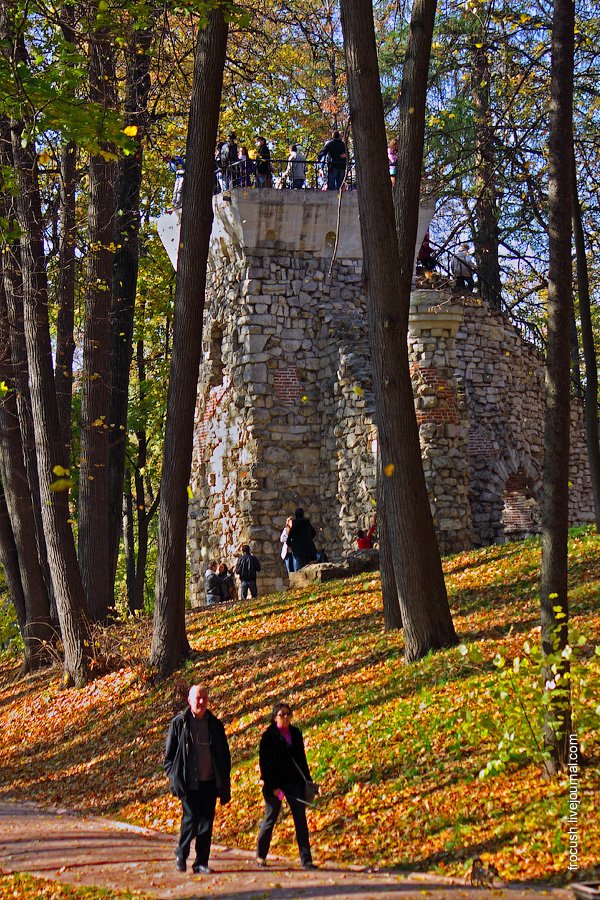
Pavilion "Milovid" or "Milovidov Gallery."
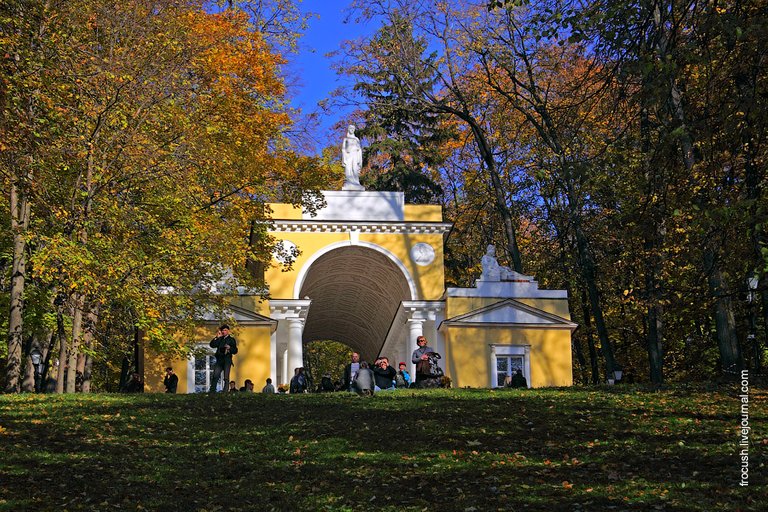
The Grand Palace. The building of the Great Palace was built by the order of Empress Catherine II by the architect MF Kazakov in 1786-1796 on the site of a demolished palace built by architect V. I. Bazhenov in 1775-1785. The construction of the palace was stopped in 1797 at the behest of Emperor Paul. In the XIX century, the unfinished building of the palace gradually turned into ruins, having lost the front porch, ceilings, roof and doorways.
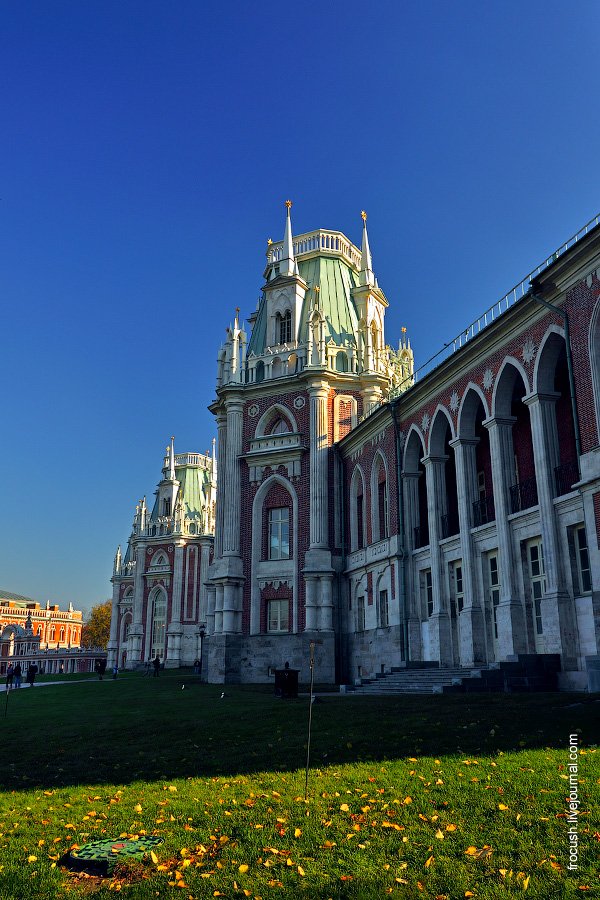
Bread house (Kitchens, Kitchen building). The economic center of the manor, concentrated in one large building, was built by the architect V. I. Bazhenov in 1784-1785. It is located in the eastern part of the ensemble and is connected with the Galeries by an arch that separates the central part of the manor from the park zone. In 1785 the architect was suspended from work, and the building was not completed. In 1786 it was covered with a temporary basted roof (later replaced with an iron roof in 1788-1789). The roof parapet was not laid out, which traditionally completes all the buildings of the Tsaritsyno ensemble; The interior decoration of the premises was not carried out. However, everything was envisaged for the creation of cellars and glaciers in it for storage of food, spacious office space for kitchens, storerooms, and living quarters for ministers.
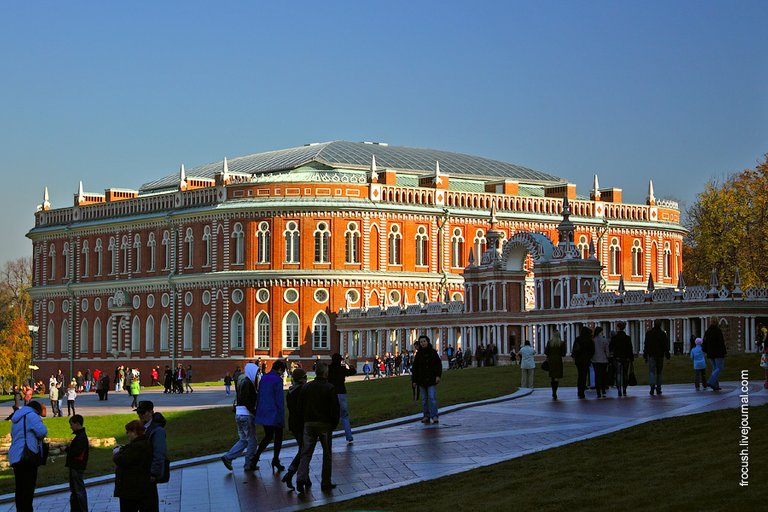
The Second Cavalier Corps (Octagonal). It was built in 1784-85 by VI Bazhenov. Located between the First and Third Cavalier Corps. The harmonious octagonal volume of the Second Cavalry Corps, classical in its integrity and brevity, gave it another name - "Octagonal". Its center is a spacious round hall, around which are large rectangular and smaller triangular rooms with an acute angle, alternating in pairs. Facades, oriented to the sides of the world, are decorated with decorative porticos with rustic columns, tall gable pediments-kokoshniki, decorated with semicircles, rays, stars, trefoils, rise above the portals. With the certification of 1947 gets the number and at the same time the most popular name - "Octagon". Appears and the third name - "Lakeysky house."

Figured bridge. It was built by VI Bazhenov in 1776-1778, represents the original design of the entrance to the estate Tsaritsyno. The spectacular structure from the side of the road looks like a part of the fortification wall with a wide passage arch, enclosed between two tiers towers. Medieval, or "Gothic" features give the bridge formidable towers with decorative dovetails in the form of a "swallowtail" reminiscent of the Kremlin ones. Two-sided facades of the Figured Bridge are richly decorated with white stone details and relief brickwork.
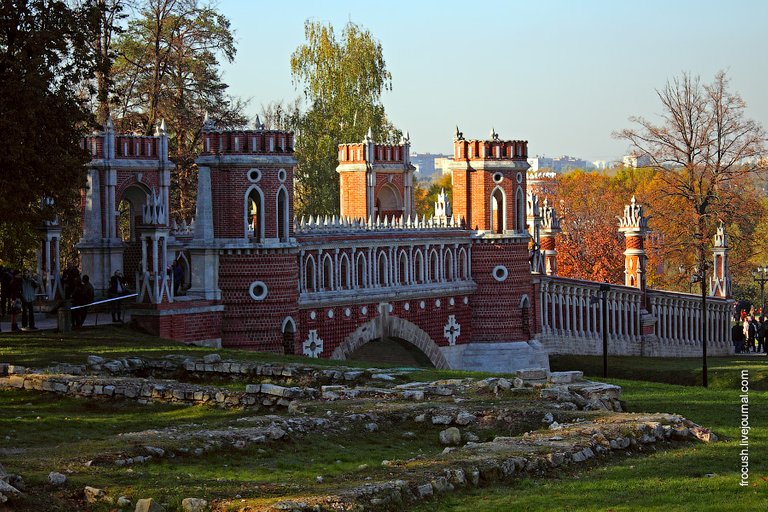
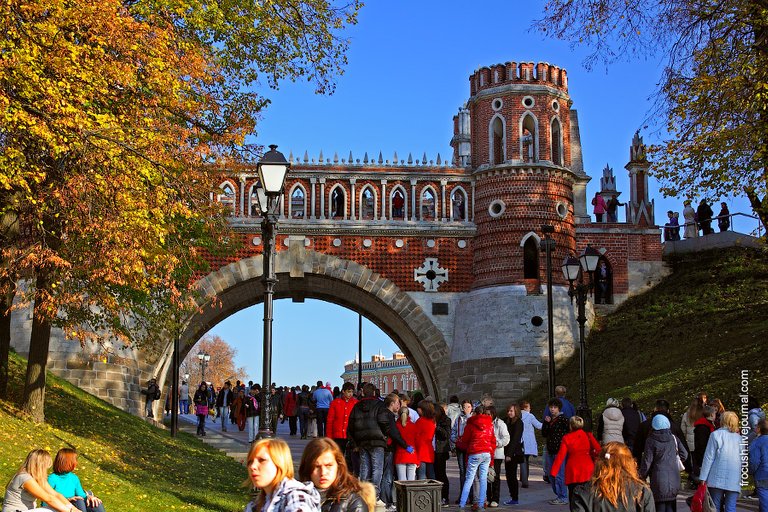
Bronze mock-up of the Kazak Palace.
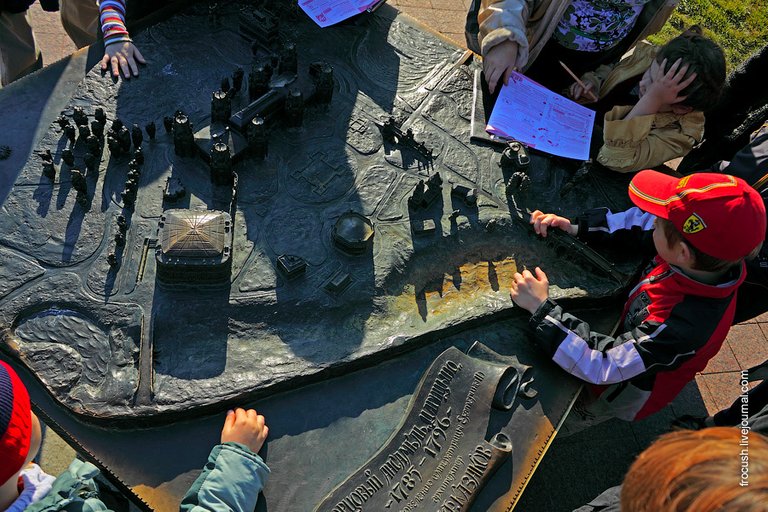
The Church in the Name of the Icon of the Mother of God The Life-giving Spring in Tsaritsyno was founded during the period of the possession of the Black Dirty by the boyars Golitsyn (1684-1689). It was originally wooden. The church is dedicated to the icon, the story of which appears in wall paintings in the early 14th century, and in icons - in the late 17th century. Iconography of the image comes from Constantinople, in the 17th century this image was associated with healing from physical ailments.
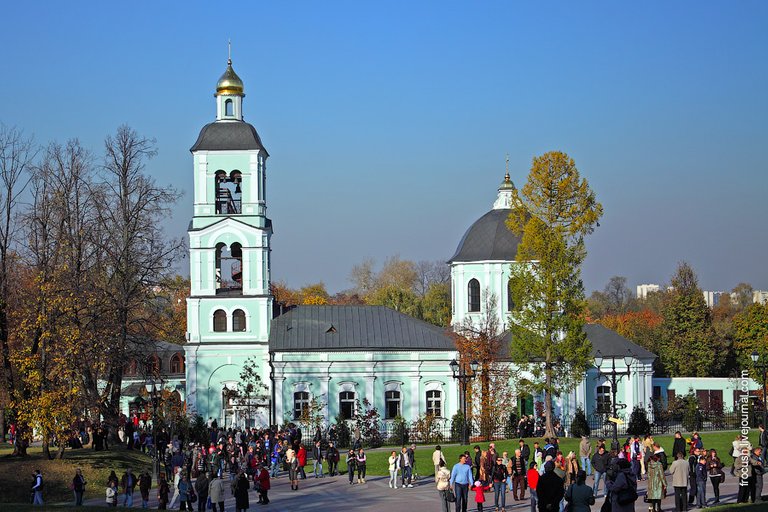
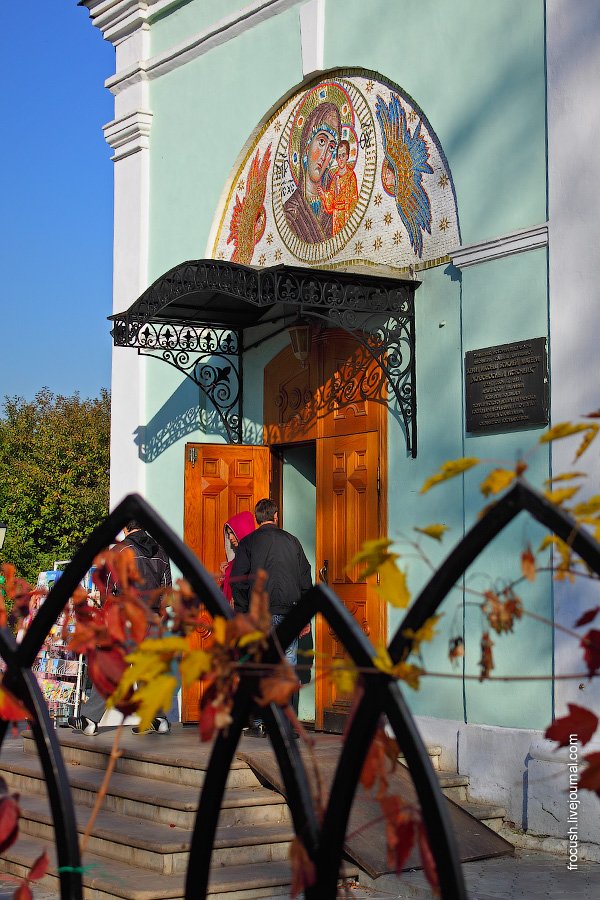
Golden Autumn in Tsaritsino.
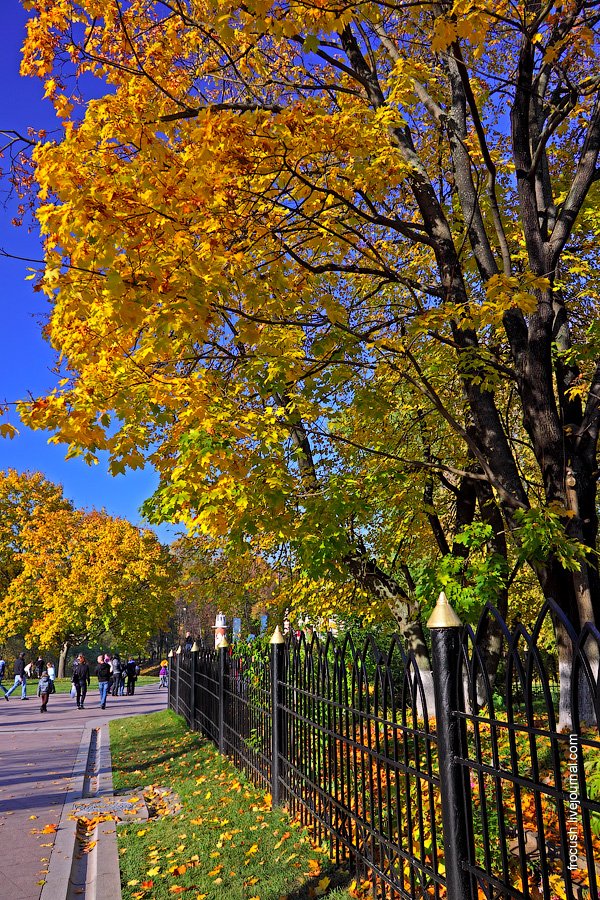
The Third Cavalry Corps is a one-story pavilion with a tower, one of the first buildings of the architectural ensemble of Tsaritsyno, built by architect V. I. Bazhenov in 1776-1779. The architect referred to him as one of three "houses ... counting from the Church moat to the entrance" to the Figured Bridge. Two non-preserved "house", the cross-shaped pavilion and the hexagonal pavilion, constituted a composite whole with it. The Third Cavalry Corps plays an important role in the overall composition of the ensemble. A small pavilion is located on a high promontory between a pond and a ravine and is decorated in the spirit of serf architecture. Like most Tsaritsyn pavilions, the Third Cavalry Corps is designed for entertainment, and the images of its facades open in motion. Change of "paintings" is due to the combination of volumes and shapes, over which crown walls crown the battlements, domes and the main tower, giving the whole building a view of a miniature fortress.
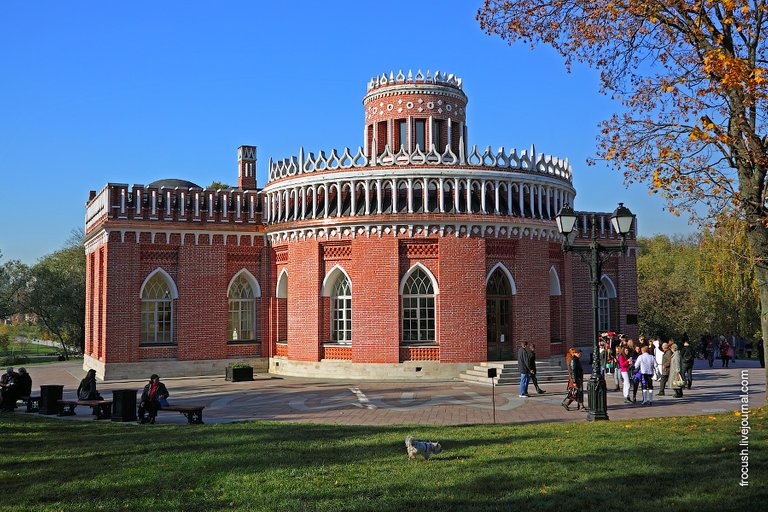
Arch "Rusalkin Gate" on the island was built in 1804 on the island of the Upper Tsaritsynsky Pond after its deepening. The author of the project is supposedly IV Egorov. Later received a poetic name - "Rusalkin Gate". It was a turret - a belvedere with a light arch that adjoined to it, which was thrown across the channel, which divided the island into two parts. From under the arch there was a magnificent view of the pavilion "Nerastankino".
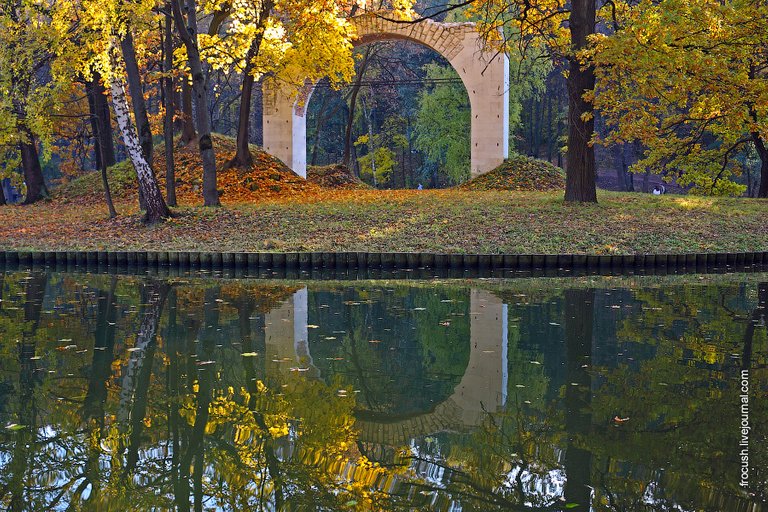
In the distance the pavilion "Nerastankino" is slightly visible.

A new bridge over the mouth of the Yazvenka.
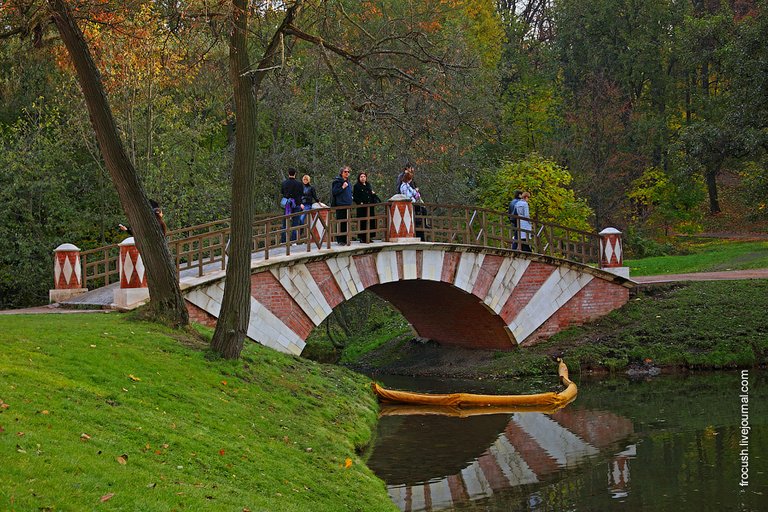
Arbor "Temple of Ceres" (Golden Sheaf). This arbor, built in 1805 by the architect IV Egotov belongs to the widely spread in the second half of the XVIII - the first third of the XIX century. Type of garden buildings. It is a circular colonnade covered with a dome. Its name was given in honor of the ancient Roman goddess of fertility, a statue of which adorned the gazebo. It stands at the border of the park at the top of the hill rising above the valley of the "Nerastankina Gallery". It plays the role of the last bright architectural accent in the coastal panorama of the landscape park.
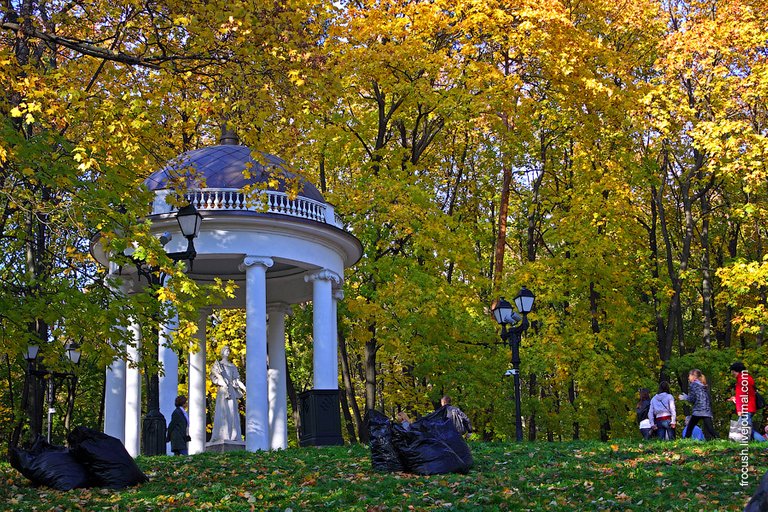
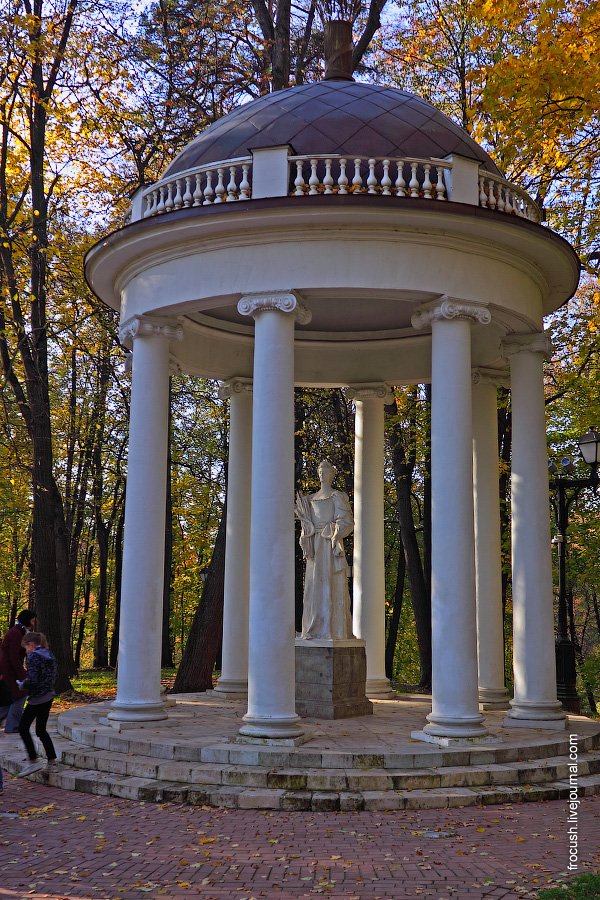
Visitors to Tsaritsyno Park walk around the fallen dry foliage.
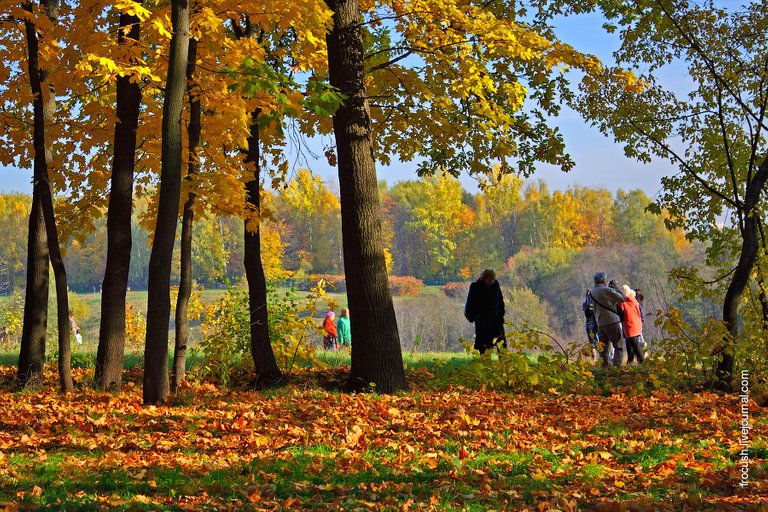
Monument to architects Basil Bazhenov and Matvei Kazakov.
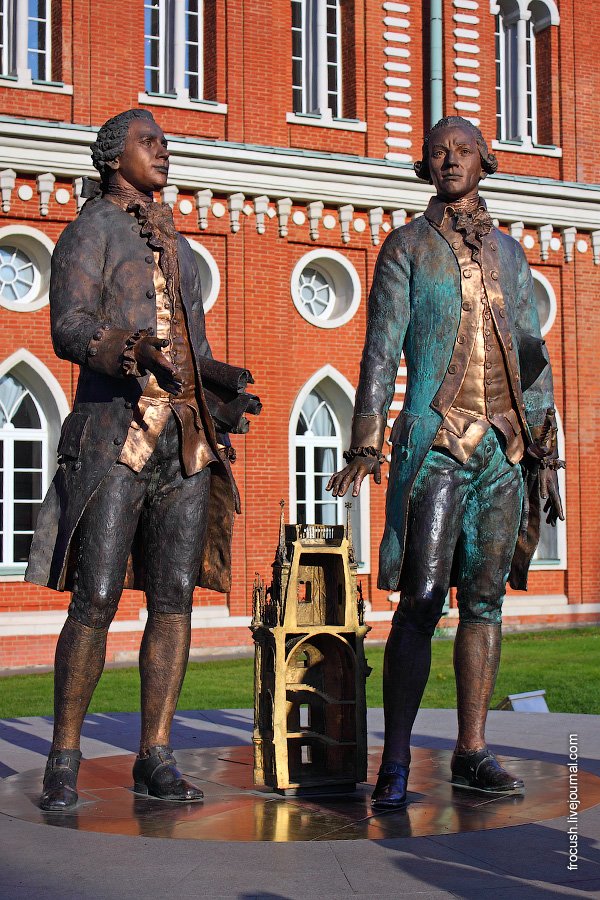
Here is such a short walk to the Tsaritsyno Museum-Reserve 10.10.2010. By the way, the toilets on the territory of the museum-reserve are free.

Vote for my post and subscribe to my blog @frocush!
Find me! LiveJournal | Facebook | Instagram
Beautifull
Отличные фотографии! Прекрасное место, жаль, не смогла посетить, когда была возможность((
great post...
keep it up dnt forget to upvote and follow back...
check my recent posts ..thankss
done